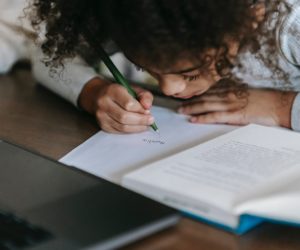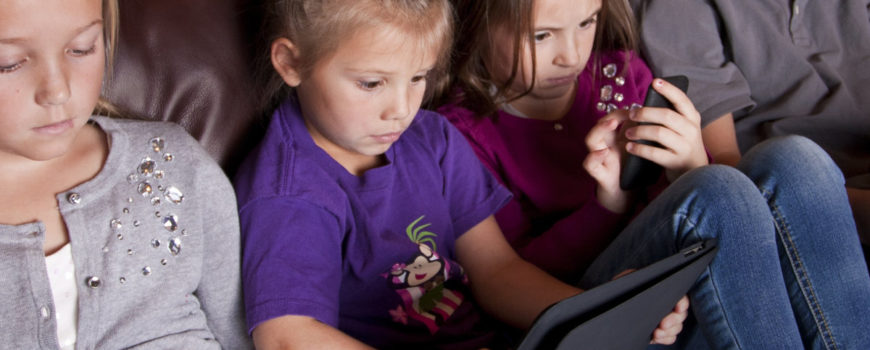Eye doctors had planned to celebrate 2020 as the year of vision (as in seeing 20/20). Instead, thanks to Covid-19, it will be known as the year that worsened the world’s vision for decades to come.
Some optometrists across New Zealand are noticing a spike in children’s vision problems as we emerge from COVID-19 lockdowns. We are seeing even more new cases of nearsightedness, or myopia in children recently, and as has also been reported internationally, some children who were already nearsighted now seem to experience worsening vision at a faster-than-expected rate.
Distance learning up close and personal
When schools closed down and we switched to distance learning and outdoor activities were limited due to social distancing restrictions, many children turned to smartphones, tablets and other devices to keep them educated and entertained; they stayed indoors and spent longer than ever staring at screens up close.
In a recent parent survey in the USA, 60% of parents said their children spent no more than three hours on devices pre-pandemic. Now, 70% estimate their kids spend at least four hours with screens.
This indoor screen time has created a heap of issues for children’s eyesight because being outdoors is one factor thought to lower the risk of myopia. Direct sunlight as well as the long-range focusing while playing outdoors can delay the onset of myopia.
Look out for myopia
 Symptoms of myopia, nearsightedness or shortsightedness include squinting, rubbing eyes frequently and complaining of blurry vision. It’s important to watch for the signs because kids often adapt to vision changes and may not complain. That could mean that parents may not even know their children has a visual disorder affecting their schoolwork and day-to-day life.
Symptoms of myopia, nearsightedness or shortsightedness include squinting, rubbing eyes frequently and complaining of blurry vision. It’s important to watch for the signs because kids often adapt to vision changes and may not complain. That could mean that parents may not even know their children has a visual disorder affecting their schoolwork and day-to-day life.
Children’s vision development
For a child with myopia, distance vision is blurry while near vision remains clear. In the past, the increase in myopia diagnoses from year to year was given little thought, since it was correctable with glasses or contact lenses. However, eye-care professionals now know that the younger a child becomes myopic, the higher their prescription may eventually become, and high prescriptions are bad news for eyes.
A number of eye conditions are more prevalent in highly myopic adults including cataract, glaucoma, retinal detachment, retinal degeneration and other ocular diseases that can have a lifelong impact on their vision.
Getting kids’ eyes on track for the way ahead
Preventing or keeping myopia from progressing is very important. Good vision is key to a child’s physical development, success in school, and overall well-being, so visit an optometrist. Between our Henderson Optometry practice and our optometrists in Newmarket our staff has dedicated over 35 years’ to children’s eye care and we can check for any vision changes after lockdown and it’s greater screen dependence .
We recommend having your child’s eyesight evaluated routinely as many symptoms go unnoticed. Do not assume a child can see well. There is no substitution for an examination with an eye-care professional. The pandemic has already caused widespread hardship. By acting now, parents can help minimise its impact on the vision and ocular health of your child into the future.
If you suspect vision changes after lockdown in your child, get an appointment with one of our Auckland optometrists right away. Call 09 522 1283 or 09 836 1731 to schedule a comprehensive eye test. Concerns can be discussed, and your eye-care practitioner will recommend the best path forward for you and your child.

